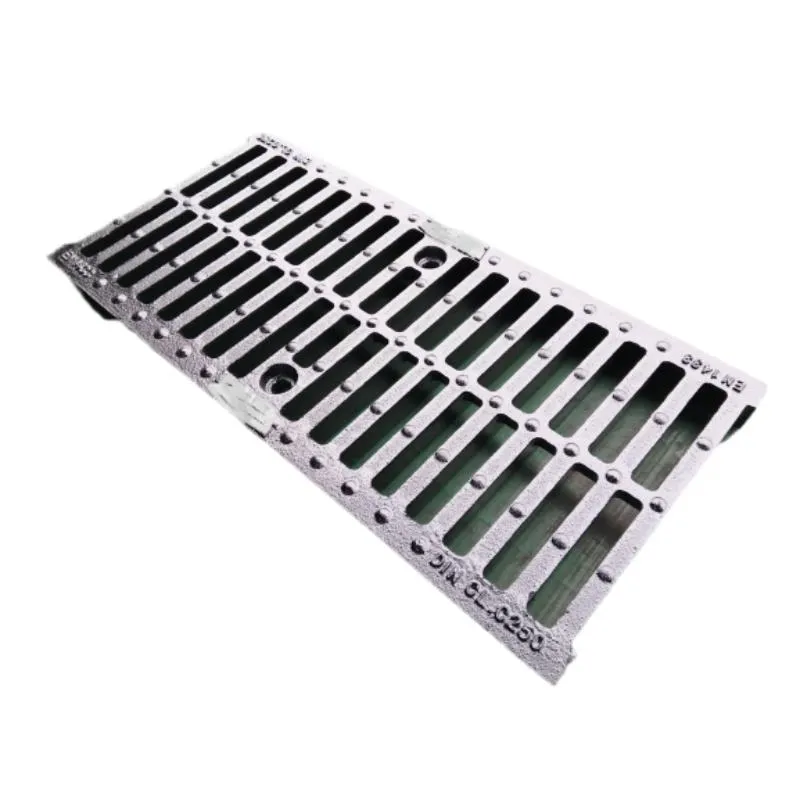Circle Cover for Access Points in Urban Infrastructure Design
The Unsung Hero of Urban Infrastructure The Manhole Circle
In the bustling heart of every city, where the rhythm of life pulses through the streets, a rather unassuming object plays a crucial role in maintaining the urban ecosystem the manhole circle. Often overlooked by passersby, these circular covers serve as portals to the intricate web of utilities, sewage systems, and telecommunications that lie beneath our feet. Despite their humble appearance, manhole circles are vital to ensuring the smooth functioning of urban life.
The Anatomy of a Manhole Circle
Typically made from materials like cast iron, composite, or reinforced concrete, manhole circles are designed to endure the pressures of heavy traffic while providing access to underground systems. The circular shape is not a mere aesthetic choice; it is fundamental to their functionality. The circle is the most efficient shape for accommodating weight and pressure. It has no corners to break, which makes it less likely to dislodge when under stress—a solid engineering solution to a common problem.
These covers feature a variety of designs, often including raised patterns or logos that represent municipal departments or utility companies. While they serve a practical purpose, these designs can also add a unique character to the streetscape, contributing subtly to the city's aesthetic appeal.
The Hidden Importance
Underneath the manhole cover lies a complex network of pipes, cables, and conduits that are essential for utilities such as water, electricity, gas, and telecommunications. Regular maintenance and inspections through these access points ensure the reliability and safety of essential services. In many cities, these underground systems are aging and in need of repair or replacement, making manhole inspections critical to preventing larger infrastructure failures.
Moreover, during heavy rains, manhole circles often serve as overflow points for stormwater management systems. They help mitigate flooding by allowing excess water to drain efficiently. In essence, these circular covers perform a vital function that protects both the infrastructure and the inhabitants from the forces of nature.
manhole circle

Art in the Urban Landscape
Beyond their functional roles, manhole circles have also become canvases for artistic expression. In some cities, artists have been invited to design unique manhole covers that reflect local culture, history, or identity. These artistic manhole circles have transformed the mundane into the extraordinary, turning a simple cover into a symbol of community pride and creativity.
In cities like San Francisco, the “Art in the Streets” program has allowed local artists to showcase their talents, encouraging community engagement and beautification of public spaces. The result is a collection of manhole covers that tell stories and invite pedestrians to look down and appreciate the artistry beneath their feet.
The Future of Manhole Circles
As cities evolve and adopt smart technology, the role of manhole circles may also change. Some cities are beginning to integrate sensors into manhole covers to monitor infrastructure conditions in real time. These advancements can provide valuable data to city planners, helping them to make informed decisions regarding maintenance and repairs.
Furthermore, with the growing emphasis on sustainable urban development, there are discussions about utilizing manhole circles as part of green infrastructure. Innovative designs that allow for rainwater harvesting or urban gardening may soon complement the traditional function of these covers.
Conclusion
The manhole circle is an understated yet indispensable element of urban life. While they may seem trivial at first glance, these circular covers connect us to the vast, hidden systems that support our daily existence. As we walk the streets, let us take a moment to appreciate their significance—not just as functional infrastructure, but as a part of the urban narrative that defines our cities. Perhaps the next time we cross paths with one of these covers, we can pause, glance down, and recognize the essential role they play in our interconnected urban environment.
-
The Essential Component for Safe Urban InfrastructureNewsMay.14,2025
-
The Backbone of Urban InfrastructureNewsMay.14,2025
-
Practical and Stylish Solutions for Your Drainage NeedsNewsMay.14,2025
-
Lamphole Frame and Cover: Essential for Urban InfrastructureNewsMay.14,2025
-
A Seamless and Aesthetic SolutionNewsMay.14,2025
-
A Must-Have for Safety and DurabilityNewsMay.14,2025
-
Pipe Repair Clamps: Your Ultimate Solution for Efficient RepairsNewsMay.09,2025
